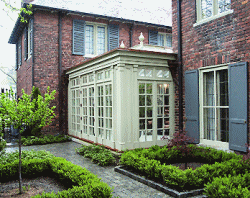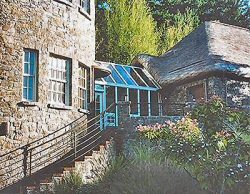|
Tips and advice on buying the perfect sunroom
Looking for a new Sunroom or Conservatory? Want information on the latest designs and styles? Request a free brochure for details of this and a whole lot more by clicking here
Technical stuff – without
the jargon
For those who want a bit more technical information ….
Foundations
The foundations are the most important aspect
of your sunroom and definitely not the place to try and save money. A sound,
solid base is crucial to properly
support the glass structure |
|
Options include: continuous, pier, wood and full basement.
Of these, continuous is the best choice in most situations, providing an
uninterrupted line to match
your home. Of the continuous foundations available, poured and block are the
most common – your architect or builder will advise on which is most
suitable for your situation.
A pier foundation is more appropriate for a hilly site and when cost is a
major consideration. |
|
 Adding basement space is expensive and often not even an option. However,
it does allow a ventilation path to help cool the sunroom. Adding basement space is expensive and often not even an option. However,
it does allow a ventilation path to help cool the sunroom.
Window glass
After the foundation, the windows are the next
most important aspect of your sunroom and the type of glass chosen makes
a significant difference to performance.
Double-glazing – two layers of glass with air or gas
between the two panes. This improves insulation and reduces condensation.
 Triple-glazed – the three layers of glass help to prevent
heat loss. Triple-glazed – the three layers of glass help to prevent
heat loss.
Low-E glass – standard clear glass with a special metal
(low-E) coating on one side. This acts as insulation, increasing energy efficiency
by reducing
the transfer of heat or cold through the glass. So your house stays warmer
in winter and cooler in summer.
There are two types of low-E glass. Pyrolytic (hard coat) is considered to
be a medium performer, while sputtered (vacuum deposition or soft coat) is
acknowledged as the highest performer.
Tempered glass – also known as safety glass, this is
heat-treated so that when it breaks it crumbles into tiny pieces rather than
dangerous shards
of glass.
Walls
There are basically four types: Wood – a classic look although it does require regular
maintenance. Not as long-lasting as alternative materials.
Vinyl/PVC – inexpensive and durable, this is a good insulating
material that requires little maintenance. The majority of vinyl supports
are reinforced
internally with either aluminium or galvanized steel.
Aluminium – provides sound structural support but it
is an inferior insulator.
Clad – this combines the energy-efficiency of wooden
frames with the maintenance-free advantages of vinyl and aluminum. Floors
Here again, there are several choices: Carpet – vulnerable to the sun’s rays, suffering fading and rotting,
although ‘outdoor’ quality carpet fares much better.
Tiles and linoleum – a tough, hard-wearing option. Dark tiles have the
advantage of absorbing heat during the day so they will be warm in the evening – however,
during the day they will be hot!!
Wood – affected by fluctuations in temperature, but less
so if you choose treated wood sold as appropriate for outdoor use.
Knee wall
If you want your sunroom to feel slightly more
conventional than an all-glass sunroom,you could consider a knee wall, so-called
because it comes up to
about the height of the knee. It forms the lower part of the outside wall – and
has the advantage that electricity cables can be run through it. So, that’s it – pretty much all
you need to know before making the decision to buy a sunroom. It’s
an investment that will bring you and your family many years of pleasure – enjoy!
Image Credits:
www.westviewproducts.com ~ www.townandcountryus.com
|

